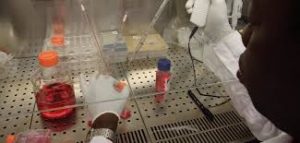Role Of Nuclear Technology In Global Food Safety:

An International Symposium on “Safe Food for a Better Life”, jointly organised by the Food and Agriculture Organisation (FAO) and the International Atomic Energy Agency (IAEA) emphasised the importance of nuclear technologies for measuring, managing and controlling food safety.
- Furthermore, the symposium highlighted the potential use of nuclear technology in ensuring food security.
- The One Health approach recognises the interconnectedness of human, animal, and environmental health; nuclear techniques can be used to detect and monitor contaminants, pathogens, and toxins in food and the environment.
- Polymerase Chain Reaction (PCR) tests is a molecular nuclear technique, to rapidly detect animal diseases in less than a day.
- Food irradiation is a process of exposing food to ionising radiation to eliminate harmful bacteria, pathogens, and pests; nuclear technology helps to extend the shelf life of food products and ensure their safety for consumption.
- Stable isotope analysis is a nuclear technique that is used to determine the origin and authenticity of food products and this helps to detect adulteration and verify labelling claims.
- Past nuclear fallouts are actually helping scientists when it comes to measuring and assessing soil erosion, radioactive nuclides left behind after nuclear events can help scientists determine the health of soils and rate of erosion.
- Nuclear techniques, such as the Sterile Insect Technique (SIT), are used for pest control in agricultural production systems.
- This technique limits reproduction and suppresses insects and pests, thereby reducing the need for chemical pesticides, which can negatively impact food safety
- Nuclear technology applied in crop breeding facilitates the development of enhanced varieties capable of adapting to climate change.
- By subjecting seeds to irradiation by gamma rays, X-rays, ions, or electron beams, genetic alterations are initiated, expanding the genetic diversity available for breeding purposes.




